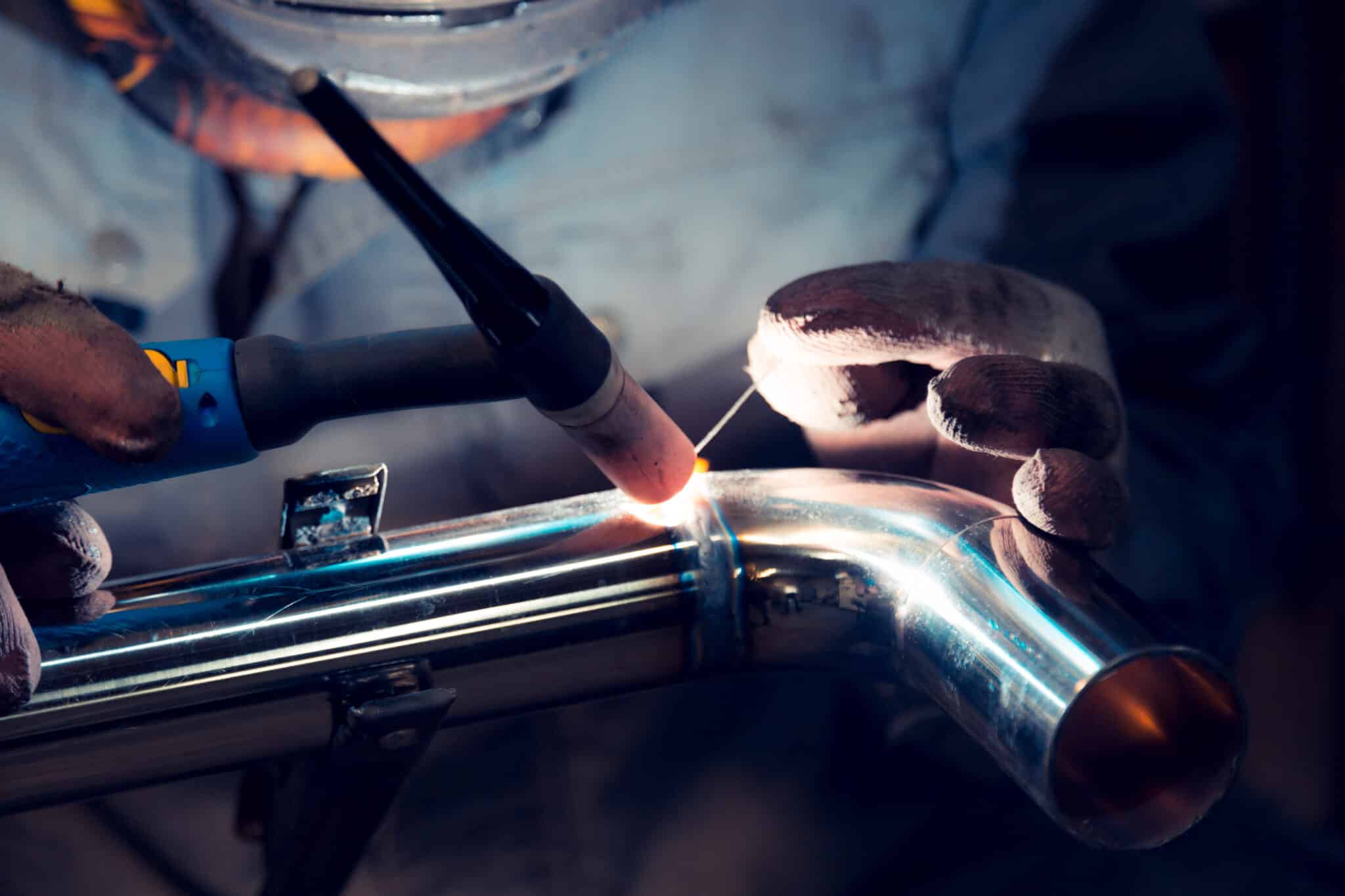
TIG welding, also known as Tungsten Inert Gas welding, is not only a skill but also an art. TIG welding is considered one of the most versatile and high-quality welding processes available today. It requires a high level of skill and precision, but the resulting welds are solid, clean, and aesthetically pleasing. Below, we will discuss the basics of TIG welding, how it works, and some real-world applications for this welding process.
TIG welding, also known as Gas Tungsten Arc Welding (GTAW), is widely recognized in the metalworking industry for its exceptional precision and versatility in joining various types and thicknesses of metal. TIG welding was first introduced into the metalworking world in the early 1940s. This technique was created to address a certain challenge: current welding techniques were not ideal for thin metals. Russell Meredith is credited with developing the process in 1941, patenting it under the name “Heliarc” due to its use of a tungsten electrode and helium as a shielding gas. This invention was a significant advancement in welding technology, making it possible to accomplish precise and clean welds that met aerospace manufacturing standards.
Many professionals favor TIG welding due to its unmatched control and precision, making it a go-to choice for welders who strive for perfection in their welds.
TIG welding works by creating an electric arc between the workpiece and a tungsten electrode. This produces heat, melting both the filler metal and the base metal. The electrode does not melt during this process but acts as a conductor for the welding current to pass through.
During TIG welding, an inert gas such as argon or helium is used to shield the weld from atmospheric contamination. The gas is directed towards the welding area through a nozzle, creating an envelope of protection around the weld pool. This shielding gas also helps to cool down the molten metal and improve overall weld quality.
The TIG welding process requires high levels of skill and precision from the welder, as they must simultaneously control the position and movement of the electrode while feeding in the filler metal by hand. This level of control allows for precise and clean welds, but it also means that TIG welding is a slower process than other methods like MIG (metal inert gas) or stick welding.
The most common technique in TIG welding is to maintain a consistent distance between the tungsten electrode and the workpiece, creating a stable arc and a high-quality weld. The welder must also carefully control the addition of the filler metal, adding it to the welding pool in a precise and controlled manner. This control makes TIG welding both challenging and rewarding, particularly when dealing with intricate welding projects or when welding thinner metals that require a delicate touch. Here are some of the most common TIG welding techniques:
Each technique requires different levels of precision and coordination from the welder. They also produce varying results in terms of weld appearance and strength.
TIG welding requires specific equipment, including:
In addition to this essential equipment, other accessories can improve the TIG welding process, such as gas lenses, collets, and cups. Also, remember to always use the proper safety equipment while welding.
Unlike MIG welding, which uses a continuously fed wire that also acts as a filler material, TIG welding requires the welder to use a separate filler rod, allowing them to have more control over the weld. Meanwhile, Stick welding employs an electrode coated in flux to protect the weld, but this can create slag that must be chipped away, which is not the case with the cleaner TIG procedure. Additionally, TIG welding offers greater versatility in terms of the metals it can join, and the lack of sparks and spatter also means a safer and cleaner work environment. However, TIG welding typically requires more skill and practice than other techniques like MIG, FCAW, or laser welding.
Like any other welding technique, TIG welding has advantages and limitations.
Overall, understanding the advantages and limitations of
Although TIG welding has limitations, its precise and high-quality welds make it a popular technique in many industries. With advancements in technology and equipment, the process continues evolving and overcoming some limitations.
As mentioned, TIG welding is widely used in various industries due to its versatility and high-quality results. It is especially useful with thin metals, types of steel, and in pipe welding.
TIG welding is also commonly used in DIY projects and small-scale fabrications because of its versatility and ability to weld a wide range of materials.
Whether you’re and experienced welder, or you’re just getting started, investing in quality welding equipment is essential. Check out some of our pipe fitting tools to help make the job more efficient and easy.
© 2023 H&K Fabrication. All rights reserved. E-Commerce Website Design & E-Commerce PPC by Ranksey